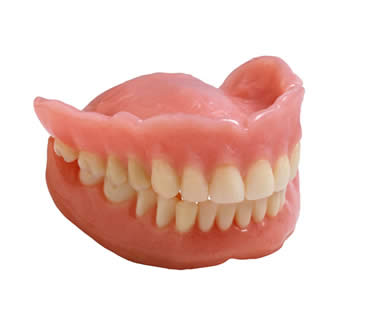
Blog, Dental Topics 2, Teeth Whitening
Your smile is a noticeable part of your appearance, and yellow dingy teeth can leave a negative impression on others. Most people have to work at having a bright sparkly smile, because teeth can discolor with age, diet, and lifestyle.
You may not realize that sipping a glass of red wine or coffee can be a detriment to your smile, as can sugary items that allow acids to attack your tooth enamel. Smoking is an even worse culprit. It not only leaves ugly spots on the surface of teeth, it also contributes to poor gum health.
If your teeth are already stained or if you’re having a hard time breaking the habits that discolor them, teeth whitening is a good way to improve the look of your smile. There are numerous methods to regain the natural glow of your teeth, ranging from over-the-counter techniques for home use to professional treatments in an office setting.
Whitening products available at your local drug or grocery store include things like toothpaste, chewing gum, mouthwash, gels, and whitening strips. These are readily available and usually inexpensive options. Most of these products are simple to use and can be done in the convenience of your home when you choose. However, over-the-counter products are not as strong as professional methods. This means that results are not dramatic and usually take a long period of time of consistent use. Also, the effects may not last as long as you hope before it’s time to consider whitening again.
Professional teeth whitening is often performed by general and cosmetic dentists in an office environment. Bleaching is a popular professional method. The biggest advantage of in-office treatment is the fast results, with a visibly brighter smile evident in about an hour. Results are often dramatic, lightening teeth by several shades. Professionals trained and experienced in these methods provide safe and effective treatment. Methods available professionally may cost a bit more than home options, but the dramatic results may be worth it.
We look forward to seeing you in our Gaithersburg dental office

Blog, Dental Topics 2, Teeth Whitening
Life is full of special events that you will remember forever. When you look back at photographs from your special days, you will want to know that you looked your very best. Weddings, birthdays, reunions, graduations, anniversaries, job interviews, or that very special first date are times you will want to put your best face forward. Everything begins with your smile. Your dentist can help you prepare for these kinds of events by brightening your smile, making you look younger and more vibrant and boosting your self-confidence.
Your teeth naturally discolor with age, and this process is accelerated as you eat various foods and dark beverages. Blueberries, blackberries, and beets can all leave stains on your teeth. Dark sodas, coffee, tea, and red wine can also leave their mark with residual color on your teeth. Don’t find yourself feeling self-conscious about your discolored smile; talk to your dentist about what teeth whitening options are available to you. Not all whitening processes are good for every type of teeth. Your dentist will know what is ideal for you.
Before you whiten, it is important to have a dental exam and cleaning. The results of your whitening depend on the initial condition of your teeth. Cleaning your teeth ensures that the whitening procedure affects all of the areas of your teeth, and doesn’t leave out areas currently hidden by plaque or tartar.
Because some teeth whitening techniques require time to achieve the best results, you need to plan ahead. Begin with a consultation with your dentist several weeks prior to your special day, to allow time for the whitening process to work. Some people experience increased sensitivity to their teeth after whitening. Starting early will allow your teeth to recover from the whitening process.
A brighter smile will always help you look and feel better. It will help you make the most positive first impression. On your special day, when you smile for the camera, your confidence will show. You’ll love what you see in photos for years to come.
If you live in the Gaithersburg area contact us today

Blog, Dental Topics 1, Implant Dentistry
Losing teeth for one reason or another is not as uncommon as you might think. Injuries and severe tooth decay are only a couple of the causes for smiles to have holes in them from missing teeth. The good news is that you don’t have to go through life with an incomplete smile. Dental implants provide one solution for replacing lost teeth.
Popularity
These restorations that involve a titanium root with an artificial tooth on top have become increasingly popular. Instead of using bridges or dentures that are known to have some hassles with them, implants are a permanent and secure solution. Once the area has healed, you can go back to your normal habits without any concerns related to the implant. They look very natural, preserve neighboring teeth, improve speech, restore the mouth’s function, and help maintain your facial features.
Candidates
Good candidates for implants have strong enough jaw bones to be able to support the implant. Patients with significant bone loss may not be able to successfully maintain implants. Good oral health is helpful, as is good general health since surgery is required. Smokers and those with certain health conditions may not be recommended for dental implants.
Procedure
Once you’ve been identified as a good candidate, the first step is having the titanium rod inserted into your jaw bone. It can take up to three months for it to completely fuse with your bones. Then your dentist will make an abutment to hold the implant, and a mold will be taken of your mouth so that the crown can be created. Until it is ready, a temporary crown will be placed. Finally, your crown will be placed and adjustments will be made if needed.
Maintenance
After you implant is complete, you can resume your regular lifestyle. Your normal dental hygiene routine of brushing, flossing, and checkups should be maintained for the best results.
We offer dental implants at our Gaithersburg dental office.

Blog, Dental Topics 2, Dentures
If you have lost all of your teeth or just a few, you are probably a good candidate for dentures. Dentures, also known as removable prosthodontics, are used for the dental restoration or replacement of missing or broken teeth. You may want to consider dentures if any of the following apply to your situation:
- You have very few remaining teeth and they are in poor condition.
- You have suffered bone loss in your mouth so severe it precludes you from considering dental implants.
- You have advanced gum disease that has resulted in the loss of multiple teeth.
- You have lost many teeth, and your remaining teeth are suffering from decay and receding gums.
- You are committed to practicing excellent oral hygiene in order to take good care of your dentures.
You may not be a good candidate for dentures if any of the following apply:
- You are a young patient whose jawbone has not fully developed.
- You grind or clench your teeth.
- You have a sensitive gag reflex.
- You are a smoker.
If you feel you are a good candidate for dentures, your dentist will evaluate the health of your teeth and gums and determine if full or partial dentures are the best choice for you. There are many factors to consider when having dentures placed, and your dental professional can help you make a decision that fits your needs and lifestyle. If you wish to regain oral functionality and improve your smile, dentures may be your answer to once again enjoying a full set of beautiful, natural looking teeth.
We treat patients from Gaithersburg and the surrounding area

Blog, Dental Topics 2, Kids Dentistry
Kids will be kids, and emergencies happen that can affect the mouth. To avoid long-term damage, extensive pain, or unsightly results, it’s important to know what to do in a dental emergency. Let’s learn what you should do when your child has one of the following common oral problems.
Severe toothache:
Look for food stuck between the teeth, and if so try to dislodge it with floss. Clean the affected tooth and rinse the mouth well with warm water. Swollen gums may indicate an infection, which requires a dental visit. Facial swelling can be relieved with cold compresses, but if it accompanies severe pain you should take your child to the dentist or emergency room. Try giving over-the-counter pain reliever, but don’t place the medication directly on the gum or tooth.
Chipped tooth:
If your child chips a tooth, contact your dentist immediately. Fast action can help save the tooth, reduce the risk of infection, and prevent extensive procedures. Have your child rinse with cold water. If you can find the tooth fragment, take it to the dentist in case it can be bonded back in place.
Knocked out tooth:
The first thing to do is locate the missing tooth. Hold it by the crown instead of the root, and rinse it gently. Try replacing the tooth back in the socket, and have your child bite a piece of gauze or cloth to hold it in place until you get to the dentist. If you can’t insert it, place it in a cup of cold milk to take with you. Time is important in saving a displaced tooth, so see your child’s dentist immediately.
Cut lip, tongue, or cheek:
Ensure your child’s teeth are undamaged, and apply firm pressure with a moist washcloth or teabag to the bleeding area. If it doesn’t stop in fifteen minutes, call your child’s dentist or head to the emergency room. If the tongue is bleeding, there’s not much you can do except wait to see if it stops bleeding on its own within fifteen minutes. If not, visit the dentist or emergency room.
If you need a dentist in Gaithersburg contact us today

Blog, Dental Topics 1, General Dentistry
There are few things more irritating than having a painful, swollen sore in your mouth. It bothers you while eating, talking, and even just sitting around. There are a number of types of mouth sores with different causes. Some are infections from bacteria, viruses, or fungus. Or they can be a result of an ill-fitting denture, broken tooth or filling, or loose orthodontic wire. Mouth sores can also be a symptom of a medical condition. Here are some details about common mouth sores.
Canker sore
These small sores occur inside your mouth, and are white or gray with a red outline. They aren’t contagious, but are recurring and can happen one-at-a-time or several at once. Experts believe that lowered immune systems, bacteria, or viruses are risk factors. Canker sores often heal by themselves in about a week, and topical anesthetics or antibacterial mouthwashes may provide relief.
Cold sore
Also called fever blisters, these sores occur outside of your mouth around your lips, nose, or chin. These blisters filled with fluid are caused by the herpes simplex virus type 1, and are extremely contagious. Once you have been infected with the herpes virus, it remains in your body and occasionally flares up. Cold sores usually heal in about a week on their own. Topical anesthetics may help, and your dentist might prescribe antiviral medications to reduce outbreaks.
Candidiasis
Also called oral thrush, candidiasis is a result of the yeast Candida albicans reproducing in large quantities. It usually happens to those with weakened immune systems, and is common with people wearing dentures or with dry mouth syndrome. Candidiasis is also linked to taking antibiotics. Controlling candidiasis is done by preventing or controlling the cause of the outbreak. Ask your dentist for advice.
Leukoplakia
Common with tobacco users, leukoplakia are thick white patches on the inside of your cheeks, gums, or tongue. In addition to tobacco use, they can also be caused by ill-fitting dentures or continual chewing on the inside of your cheek. Leukoplakia is linked with oral cancer, so your dentist may advise a biopsy if the patch looks suspicious.
Contact our dental office in Gaithersburg to schedule a dental checkup.







